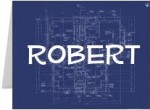
Robert, now in his late sixties has spent the last 30 years building a successful manufacturing business. In addition to the business itself, he owns a beautiful home, a few properties and some GICs. He would be considered wealthy by many people. Robert is on his second marriage to Elaine, 64, also previously married. Robert has three children from his first marriage including a daughter, Sonia, who works as a teacher in another province and two sons, Thomas and Paul, who have worked in the business since their early 20s.
Robert’s wish is that his two sons take over the business; however each has different skills and temperaments which has led to occasional conflict in the past. Robert wonders whether the business would succeed without him there to mediate. In recent years, the business has retained considerable profits and as such, it represents a significant portion of Robert’s wealth. In addition, he would need income from the business during retirement but wants to ensure this does not create undue strain on the company. Robert wants to treat his children fairly and avoid disputes but also provide for Elaine when he is gone. His desire is to leave the house to Elaine and the business to the boys, but wonders where that leaves his daughter. Robert’s accountant brought us in to add some perspective.
Over the course of a few meetings with Robert and his accountant, we helped identify and prioritize Robert’s goals, both financial and non-financial. This included a clear understanding what the business meant to him, his need for on-going control, retirement income and desired legacy. We examined the relationships his children had with each other and with Elaine to ensure his plans don’t create unnecessary conflict.
Working closely with his accountant and lawyer, we developed a 3 year game plan to transition the business to his sons. Included in this plan were written agreements to ensure a smooth transition and funding for the buy-sell provisions. We developed a means to ensure sufficient retirement income independent of the success or failure of the business and employed a number of strategies to access the trapped capital inside the business while minimizing the tax consequences. Next, we addressed the tax liabilities which were accruing and created a plan to retire the debt and maximize his estate.
Finally, we developed a communication strategy to assist Robert in discussing his intentions with his family. In the end, Robert decided that family harmony was more important than achieving the absolute maximum tax savings and felt relieved knowing that all his objectives were considered and well balanced. In Robert’s words “I finally have a blueprint for life beyond the business”.
